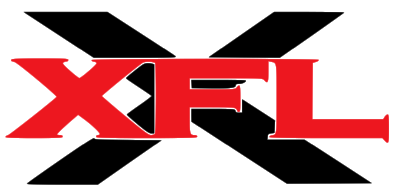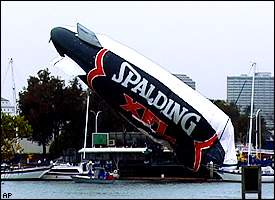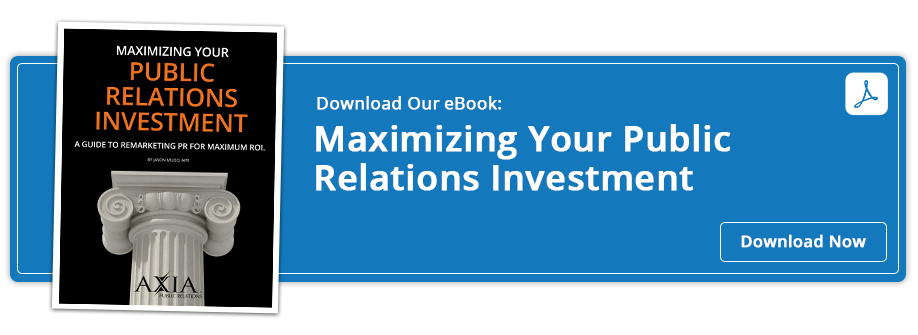 Even extraordinary PR can’t save a poorly produced product
Even extraordinary PR can’t save a poorly produced product
Vince McMahon and Duncan “Dick” Ebersol, two respected heavyweights in the promotion and media worlds, set out to change the course of history when they launched the XFL. What they didn’t know at the onset is that if your product isn’t as good as your publicity, you will not succeed.
In 1999, World Wrestling Federation founder and top-notch promoter Vince McMahon and his best friend, Saturday Night Live and NBC Wide World of Sports creator Duncan “Dick” Ebersol, hatched a plan to create a new sports category: the XFL. Announced one year before official kickoff, the XFL touted itself as “smashmouth football”; a game that would take fans places the NFL was “afraid” to take them.
Ebersol and McMahon worked tirelessly to position teams, coaches, cheerleaders, sports commentators, merchandise and an NBC media partnership. The network came on board to carry the XFL in the prime slot immediately before SNL, while a then-seated Minnesota Governor Jesse Ventura agreed to be a color commentator. 
Throughout the year between launch and premiere, the XFL generated immense media hype. It took direct aim against the largest football enterprise, the NFL, by highlighting the no-rules, gladiator-style game, hypersexualizing XFL cheerleaders, establishing outrageous team names (Outlaws/Maniacs/Hitmen) and flying a blimp over an Oakland Raiders/Miami Dolphins game (which subsequently crashed into a seafood restaurant).
Image courtesy of ESPN
For the opening game, the XFL sold more than 1 million tickets and excited fans waited in a 2-mile line of traffic to reach the stadium on game day. That evening, more than 54 million viewers tuned in to NBC to watch – a 25 percent greater viewership than any other televised sporting event in history. However, what soon followed was a series of bungles and failures. The league’s no-rules attitude made it difficult for players to train and resulted in injuries and less-than-stellar athletics and other networks and media outlets refused to provide coverage of the XFL calling it sensationalized television. Just one month in, the XFL earned the lowest televised ratings in sports history, which led to its demise after one disastrous season.
As retired NBC Sports president Ken Schanzer said regarding the XFL, “It all goes back to the success of our promotion and the failure of our execution.” What the XFL left behind provides a cautionary tale for public relations professionals. No matter how huge a success the PR/publicity campaign is, it may not ultimately be enough to save the product – or it may even be too good to save it. Here is what you can learn from the infamous fiasco:
- If your product isn’t great, PR won’t help it – long-term.
McMahon is known as the world’s best promoter, and while he eked out every ounce of hype around the XFL, the executives lost control of their creation. Should you gain tremendous earned media attention, none of it will matter if your product doesn’t live up to the hype.
- PR stunts can be effective.
XFL players decided themselves what names to display on their team jerseys. One player, Torrold DeShaun "Rod" Smart, selected “He Hate Me.” Smart’s no-holds-barred style on the field made him an overnight sensation and media darling. He told reporters that he chose the name because he knew that his opponents would “hate on” him when he snatched a catch out of someone’s grasp or ran by them at rocket speed. The player’s unexpected PR stunt catapulted his popularity for the brief time the XFL existed.
- Credibility is more valuable than temporary hype.
XFL co-creator Dick Ebersol believed the gap between the hype and performance was so evident that audiences felt a sense of deceit that caused the rapid downfall of the XFL. Reflecting, he said, “I thought we were going to deliver good football. I don’t believe in my entire career in sports or show business, I was ever more wrong.” The hype oversold the product, and therefore, the audience felt insulted. Ebersol and McMahon’s credibility and that of the XFL suffered greatly because of it. Once trust and credibility are dashed, the fever pitch of the hype quickly turns to crisis.
PR is a powerful tool in any business arsenal. However, if your product doesn’t mirror the message or hype, no amount of earned media can save it. To optimally execute your launch and avoid credibility pitfalls, download Axia Public Relations’ guide Maximizing Your Public Relations Investment or contact Axia to ensure your company receives positive earned coverage that endures.

 Wendy Bulawa Agudelo has nearly 20 years of experience in technology, business, consumer and nonprofit public relations. She serves on the Massachusetts Down Syndrome Congress PR Task Force and is a culinary enthusiast and champion for the special needs community. Wendy has worked for Axia Public Relations since September 2014. Learn more about Wendy Bulawa Agudelo. Connect with Axia on Twitter @axiapr or tell us what you think in the comments below.
Wendy Bulawa Agudelo has nearly 20 years of experience in technology, business, consumer and nonprofit public relations. She serves on the Massachusetts Down Syndrome Congress PR Task Force and is a culinary enthusiast and champion for the special needs community. Wendy has worked for Axia Public Relations since September 2014. Learn more about Wendy Bulawa Agudelo. Connect with Axia on Twitter @axiapr or tell us what you think in the comments below.
Featured image credit: Creative Commons
Topics: PR case studies, public relations

Comment on This Article